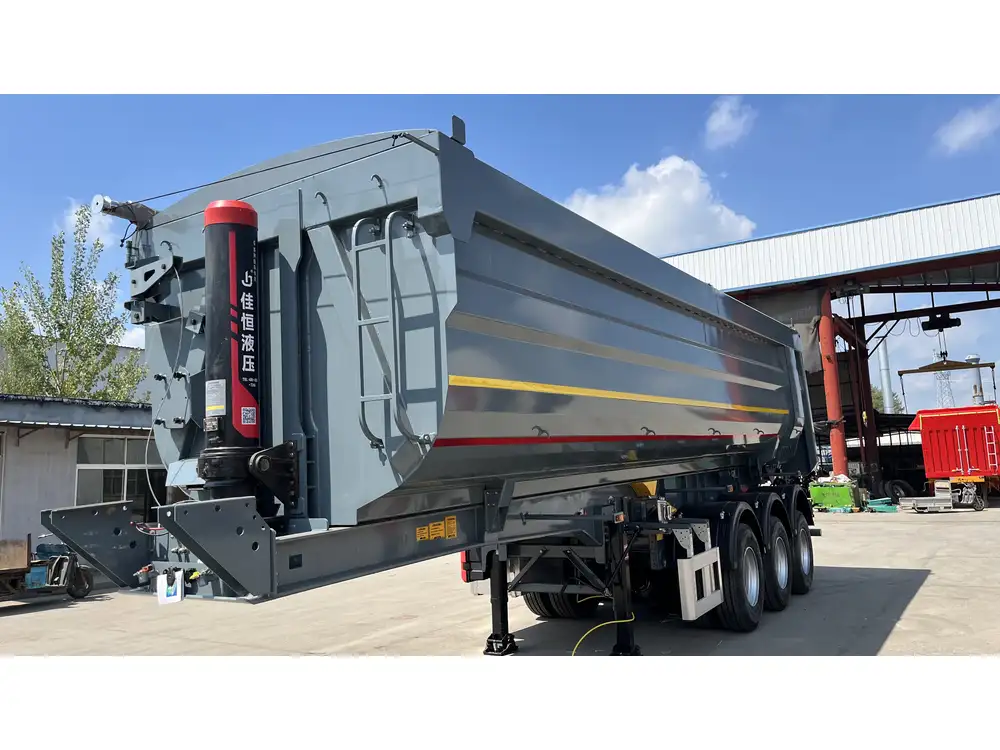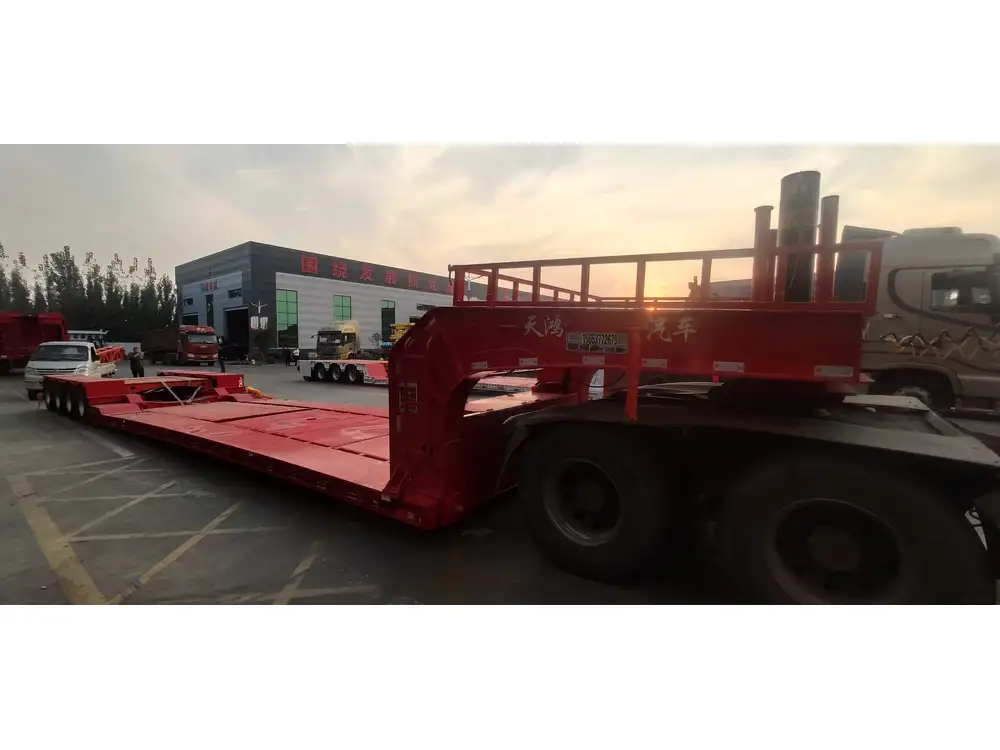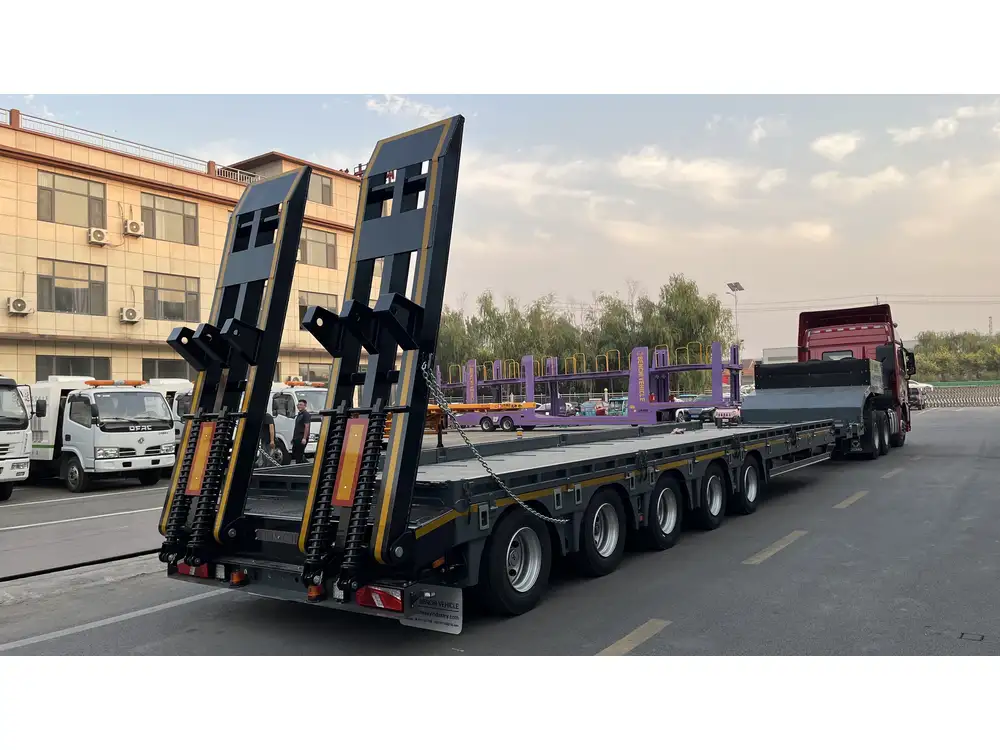In the world of logistics, the demand for efficient transportation solutions continues to escalate. One such solution that emerges as a cornerstone in freight transport is the container skeletal trailer. Understanding the dimensions and specifications of these trailers is crucial for ensuring compliance with regulatory standards and optimizing loading efficiency. This guide delves deep into the various dimensions and configurations of container skeletal trailers and aims to provide a thorough understanding for manufacturers, logistics companies, and fleet operators.
What is a Container Skeletal Trailer?
A container skeletal trailer is specifically designed to transport intermodal containers. Not only does this type of trailer allow for the easy loading and unloading of containers, but it also maximizes the use of space while minimizing the weight of the trailer itself. Typically constructed with a robust steel frame, these trailers can be utilized for various container sizes and configurations, including 20-foot, 40-foot, and 45-foot containers.
Key Features of Container Skeletal Trailers
- Lightweight Construction: Designed for maximum payload capacity, usually made from high-strength steel.
- Versatility: Can accommodate a range of container sizes and types.
- Ease of Use: Optimized for easy loading and unloading procedures, compatible with various loading equipment.
- Enhanced Stability: Typically equipped with advanced suspension systems for smoother transport.

Standard Container Skeletal Trailer Dimensions
Understanding the standard dimensions of skeletal trailers is vital for various stakeholders. Below is a breakdown of the typical dimensions for both 20-foot and 40-foot configurations.
| Container Size | Trailer Length | Trailer Width | Trailer Height | Max Load Capacity |
|---|---|---|---|---|
| 20-foot | 24 ft (7.32 m) | 8.5 ft (2.59 m) | 4.4 ft (1.34 m) | 30,000 lbs (13,607 kg) |
| 40-foot | 40 ft (12.19 m) | 8.5 ft (2.59 m) | 4.4 ft (1.34 m) | 60,000 lbs (27,216 kg) |
| 45-foot | 45 ft (13.72 m) | 8.5 ft (2.59 m) | 4.4 ft (1.34 m) | 65,000 lbs (29,484 kg) |
Detailed Breakdown of Dimensions
1. Length
- 20-foot Trailers: Standard lengths range from 20 to 24 feet. The trailer must accommodate the full length of the container while allowing for some overhang if necessary to ensure safe transport.
- 40-foot Trailers: Commonly available in lengths from 40 to 45 feet. These trailers balance length with maneuverability, especially in urban settings.

2. Width
- Standard Width: Most container skeletal trailers measure approximately 8.5 feet wide. This width is compliant with regulations in most regions, although specific jurisdictions may have different requirements.
3. Height
- Uniform Height: Most skeletal trailers maintain a height of around 4.4 feet, designed to meet road compliance and maintain a low center of gravity, which enhances stability during transport.
4. Max Load Capacity
- 20-foot Capacity: Typically supports a load of up to 30,000 lbs, suitable for lighter container varieties.
- 40-foot Capacity: Designed to handle heavier loads, often supporting around 60,000 lbs, making them ideal for standard shipping containers laden with goods.

Unique Dimensions for Different Applications
While the standard dimensions are essential for general use, unique configurations may be required for specific applications.
1. Reefer Container Trailers
Designed for temperature-sensitive cargo, reefer trailer dimensions remain consistent with standard dimensions but come with additional features such as refrigeration units, which may increase overall weight.
2. Flatbed Skeletal Trailers
Flatbed variations allow for loading oversized cargo, leading to extended lengths and varied width specifications. Flatbeds tend to have fewer structural elements that can restrict cargo placement, making them a versatile option.
| Application Type | Trailer Length | Max Load Capacity |
|---|---|---|
| Reefer Container | 40 ft (12.19 m) | 55,000 lbs (24,948 kg) |
| Flatbed Skeletal | Customizable (up to 53 ft) | Varies by configuration |

Regulatory Considerations
Navigating the complexities of trailer dimensions requires compliance with various regulations to enhance safety and mitigate potential legal issues. Here’s a simplified format on regulatory considerations:
| Region | Length Regulation | Width Regulation | Height Regulation |
|---|---|---|---|
| United States | Max 53 ft | Max 8.5 ft | Max 13.5 ft |
| European Union | Max 16.5 m | Max 2.55 m | Max 4.0 m |
| Australia | Max 19 m | Max 2.5 m | Max 4.3 m |
Importance of Regulation Awareness
- Safety: Non-compliance leads to significant risks, including accidents.
- Cost Efficiency: Over-dimensioned vehicles can incur fines and increased operational costs.
- Operational Smoothness: Adhering to regulations facilitates smoother transit through checkpoints.
Factors Influencing Container Skeletal Trailer Selection
When selecting an appropriate skeletal trailer for freight transport, numerous factors should be taken into account:

1. Cargo Type: Assess whether the cargo requires specialized transport (e.g., temperature-controlled).
2. Transport Distance: Consider the type of road and potential challenges along the route, such as height restrictions or weight limits.
3. Cost Efficiency: Evaluate the trailer’s cost in proportion to the operational requirements, including fuel efficiency and maintenance needs.

4. Manufacturer Reputation: Research manufacturers with a solid reputation for durability and compliance with regulations.
| Selection Criteria | Considerations |
|---|---|
| Cargo Type | Temperature-sensitive, oversized, fragile |
| Transport Distance | Local, regional, cross-country |
| Cost Efficiency | Acquisition cost, operating cost |
| Manufacturer Reputation | Warranty, customer service, reviews |
Maintenance Tips for Skeletal Trailers
To ensure longevity and efficient operation, regular maintenance is paramount. Here’s a structured approach to maintaining container skeletal trailers:
1. Regular Inspections: Conduct thorough checks on the trailer’s frame, suspension, and tires.
- Frequency: Monthly inspections are recommended for heavy-use scenarios.

2. Brake System Checks: Ensure brakes are functioning properly to optimize safety.
- Maintenance Tip: Inspect brake lines and pads for wear at least every quarter.
3. Tire Maintenance: Monitor tire pressure and tread depth regularly.
- Maintenance Schedule: Check before long-haul trips and rotate tires every 10,000 miles.
4. Weight Distribution: Ensure proper weight distribution across the trailer to prevent structural stress.
- Weight Check: Use weight scales at loading docks whenever possible.

The Future of Container Skeletal Trailers
As the logistics industry continues to evolve, the design and functionality of skeletal trailers are likely to adapt to meet new demands. Emerging trends include:
- Lightweight Materials: The introduction of advanced materials like aluminum and composites promises to reduce weight without compromising strength.
- Temperature Regulation Innovations: Development of integrated cooling systems for reefer trailers to enhance cargo safety.
- Telematics Integration: Implementing advanced tracking and monitoring systems to facilitate real-time visibility of cargo and trailer status.
Conclusion
Understanding the dimensions and specifications of container skeletal trailers is a prerequisite for optimizing freight operations. By comprehensively analyzing various aspects related to the size, regulatory requirements, maintenance, and emerging trends in the industry, stakeholders can make informed decisions that enhance the effectiveness and efficiency of their supply chain processes.
In an industry where the intricacies of transportation can make or break a logistical operation, staying atop the specifications and dimensions of container skeletal trailers ensures compliance, safety, and economy in freight transport.



